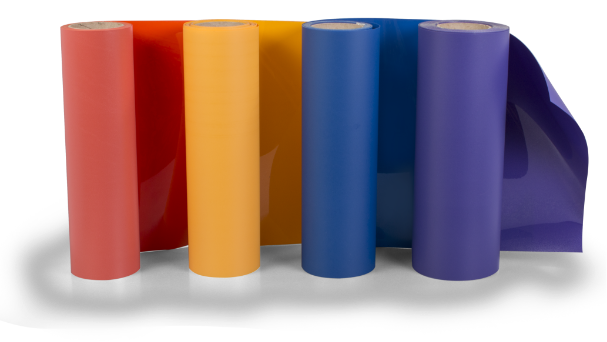
Scott Fresener and Richard Greaves were literally the first people outside of the company to share the news about AquaTru and the Hotronix Bottom Heat Platen. They interviewed me live on Facebook during the SGIA.
One of the main reasons I traveled to the SGIA Expo in New Orleans this year was to introduce several ground-breaking innovations that Stahls’ is introducing in the coming months. This is always a block-buster trade show, with attendees from around the world. This year was no different, even if the threat of Hurricane Nate kept a few people away. But when the hurricane was downgraded to a tropical storm and blew by with little to no impact on the city, everyone breathed a sigh of relief and got back to the business at hand. For me, that meant meeting with a large number of media folks and sharing our latest innovations. And now, I’d like to share them with you as well.
The last time we did a press conference like this was about 30 years ago–and it was also at the SGIA show–when we introduced CAD-CUT heat transfer materials and the concept of cutting your own names and numbers. People thought we were crazy then, but today CAD-CUT is on it’s way to become a billion dollar industry. The reality is, CAD-CUT heat transfer materials solve a lot of problems. They allow you to heat print on items that can’t or shouldn’t be screen printed or embroidered, and they allow you to profitably print quantities as low as one piece. In short, they are a solution to your decorating challenges. At the SGIA show this year, we introduced two seemingly simple innovations that also solve industry wide problems. First, let me identify the problem. As you all know, performance wear has taken over the world. Which is great—but not if you don’t know how to print on it.With performance wear, you can still heat print, but you need to cool down. The fibers used to create performance wear can’t take the heat like cotton and polyester. So if you’re printing on performance wear, the first thing you need to know is you need to know is that you must COOL DOWN. This is why we’ve invested heavily in developing low-temperature adhesives. But another problem arose, inherent to performance wear: DYE-MIGRATION
We know team dealers who would go to deliver sublimated or dyed polyester uniforms in the hotter states-like Louisiana, TX, AZ-and by the time they took them out of their cars to deliver to the team, the white logos would be pink. Ruined. Printing on sublimated fabrics has always been a problem, and it just continues to get worse. Because more and more screen printers are looking to heat printing as a solution. This is why we spent many years and worked with chemists around the world to develop and introduce AquaTru™ Dye-Block (available in early-mid January 2018). It’s the first heat printable solution that blocks dye-migration when printing on performance wear or other sublimated garments. And Stahls’ is the only one who has it. At the SGIA show, we showed our guests uniforms that had been printed with AquaTru and washed up to 125 times. They were amazed that the washed garments looked exactly like a shirt that had never been washed! And yes, we really did wash and dry them in our testing process…just like your customers do, throwing them in a hot washer and a hot dryer. Everyone who sees it agrees–AquaTru is going to change the way you think about heat printing on performance wear. We’ve not only cracked the code for decorating sublimated garments, but we’ve managed to give it an impossibly soft hand and lots of stretch. This solution has been many years in the making and we have to thank our chemists and ink experts around the globe, especially in Spain, for helping to make AquaTru a reality. It will be available from Stahls’ Transfer Express as a custom transfer option and also from Stahls’ for cutting. If you want to be first on the list for more information, click here and give us your email address.
SOLVING THE SCORCHING PROBLEM
Another problem many of you have is also related to performance wear–scorching. No one wants to have a scorch mark or square box around your print when you are finished heat pressing. You don’t like it, your customers hate it. One way to combat it was to use graphics that feature lower-melt adhesives, and Stahls’ and Transfer Express both have such options. But sometimes even that wasn’t enough. But now there is an answer. In order to eliminate scorch marks, you need to heat your graphics from the bottom up. That’s right, a bottom heat press platen. Which means no marks from the upper heat press platen. It’s a revelation and a revolution in heat printing. Every single person that had the opportunity to get a demonstration of the Hotronix Heated Lower Platen said “when can you ship it?” The answer? It will be available in November. Designed for use with any model of Stahls’ Hotronix Clam, it’s an attachment that can be retrofitted on your Hotronix Clam press even if you bought it 20 years ago. We will be sharing more information on it soon.
Thank you again for all of the media that came to learn more about our innovations. We truly appreciate your interest in the future of heat printing and garment decoration in general. You are important resources for all our customers around the world.

Eileen Fritsch of the SGIA Journal gets a demonstration of the Hotronix Bottom Heat Platen from Ben Robinson.

Aaron Montgomery and Terry Combs of the Two Regular Guys Podcast also stopped in for an interview and invited me to appear on an upcoming podcast as well.


